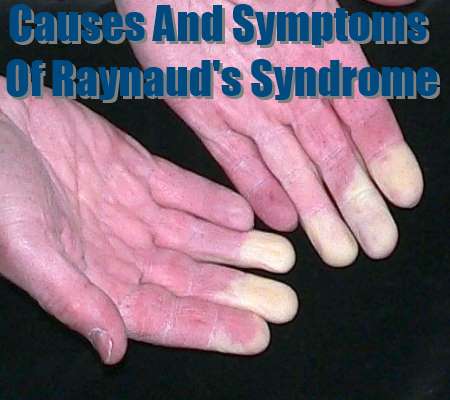
Raynaud's Syndrome is a disorder which causes a person's hands or feet to feel cold, hot, tingly, swollen, numb or very painful. If a person has a Raynaud (ray-NOOZ) attack, blood vessels in the extremities become extremely narrow, thereby lessening blood flow to the area affected. During an attack, the body will experience: extreme pain and tenderness, increased sensitivity to touch, blisters, redness, swelling, and sometimes cracking and swelling. This symptom can be experienced by anyone at any age.
The main symptom of this disorder is that a person's hands or feet can become extremely sensitive to touch. This is an extreme and debilitating form of the syndrome. Another symptom is the pain, which can be caused by the Raynaud Attack. Another symptom is the blisters which are caused by the symptoms of the syndrome.
One symptom is that a part of the body will change from its normal body temperature to something higher. This will not only be a discomfort for the person experiencing the change but also cause the person to sweat even more. This change is a result of the body being under stress.
Another symptom of the syndrome is the tingling sensation which occurs when a person is touched. There can be more than one of these attacks in a person's life. It is extremely painful, and is known to last from a couple of seconds to a few minutes. However, there can be some cases where a person does not experience an attack for months at a time.
There are several reasons why a person would experience pain, such as muscle strain and stress. When the blood flow to an affected area is decreased, it can cause the nerves of that area to contract, resulting in pain or inflammation. When blood flow increases, it can cause the nerves to relax and decrease the amount of tension.
Some people also think that the syndrome might be a sign of cancer. This is not true.
The disorder is a disorder of the vascular system, and it cannot be cancerous
In fact, studies have been done to show that the symptoms of the syndrome are very similar to those of myeloma.
There may be times in a person's life when they feel that there is some sort of infection going on in the limbs or extremities.
Other times the syndrome may occur with no symptoms at all
This condition may require surgery. If a person has a severe and very intense seizure, the doctor will order surgery to prevent the condition from worsening. However, there is a good chance the symptoms will go away on their own.
The most common symptoms a person experiences in this condition are pain in the arms, hands, feet and legs. These symptoms can appear at any time and can range from mild to very severe. They can also occur in different parts of the body such as the neck, face, back, or even legs. You can learn more about what other symptoms there are on https://ihealzy.com/.
Pain may not always be felt directly, but someone else may feel it. The person may feel numbness or tingling in the affected area.
Symptoms occurring in different parts of the body can be more severe than symptoms occurring in one area. For example, if someone has a tingling sensation in one arm, they may experience a bout of pain in both arms and even in the arms. Sometimes they may experience pain throughout the body.
People with this syndrome may notice that their skin becomes tender and itchy. They may experience pain in their feet and legs, but they may also find it difficult to move them.